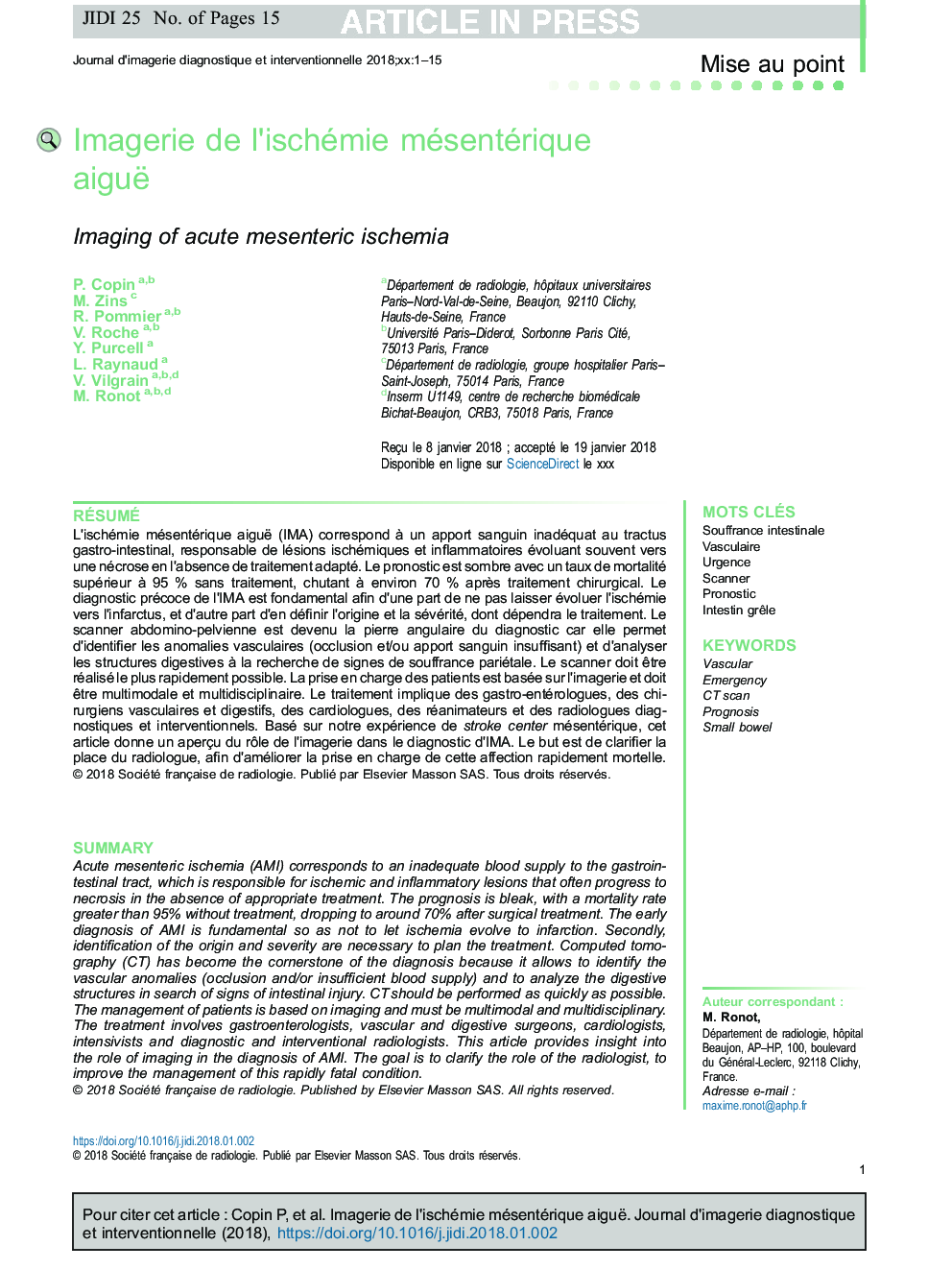| Article ID | Journal | Published Year | Pages | File Type |
|---|---|---|---|---|
| 8940912 | Journal d'imagerie diagnostique et interventionnelle | 2018 | 15 Pages |
Abstract
Acute mesenteric ischemia (AMI) corresponds to an inadequate blood supply to the gastrointestinal tract, which is responsible for ischemic and inflammatory lesions that often progress to necrosis in the absence of appropriate treatment. The prognosis is bleak, with a mortality rate greater than 95% without treatment, dropping to around 70% after surgical treatment. The early diagnosis of AMI is fundamental so as not to let ischemia evolve to infarction. Secondly, identification of the origin and severity are necessary to plan the treatment. Computed tomography (CT) has become the cornerstone of the diagnosis because it allows to identify the vascular anomalies (occlusion and/or insufficient blood supply) and to analyze the digestive structures in search of signs of intestinal injury. CT should be performed as quickly as possible. The management of patients is based on imaging and must be multimodal and multidisciplinary. The treatment involves gastroenterologists, vascular and digestive surgeons, cardiologists, intensivists and diagnostic and interventional radiologists. This article provides insight into the role of imaging in the diagnosis of AMI. The goal is to clarify the role of the radiologist, to improve the management of this rapidly fatal condition.
Keywords
Related Topics
Health Sciences
Medicine and Dentistry
Health Informatics
Authors
P. Copin, M. Zins, R. Pommier, V. Roche, Y. Purcell, L. Raynaud, V. Vilgrain, M. Ronot,
